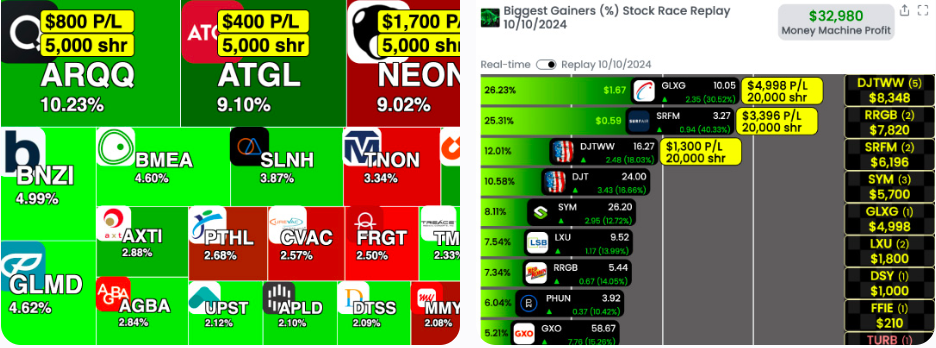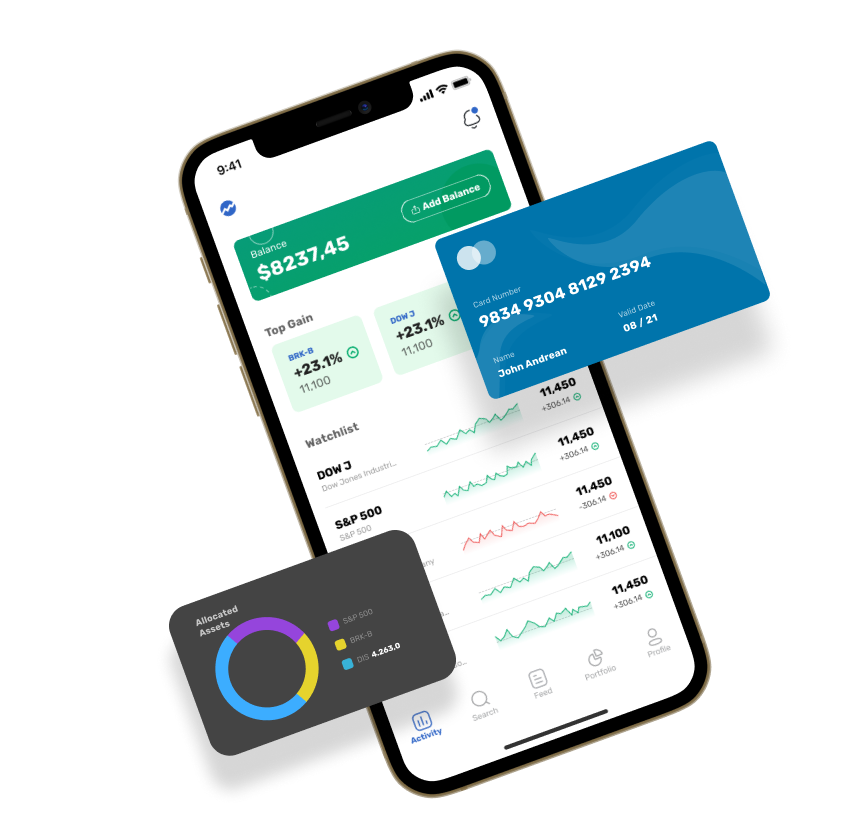20 Great Tips On Deciding On AI Stock Picker Analysis Sites
20 Great Tips On Deciding On AI Stock Picker Analysis Sites
Blog Article
Top 10 Tips To Evaluate The Ai And Machine Learning Models Of Ai Analysis And Prediction Of Trading Platforms For Stocks
Assessing the AI and machine learning (ML) models utilized by stock prediction and trading platforms is crucial in order to ensure that they are precise, reliable, and actionable insights. Models that are poor-designed or over-hyped can lead to inaccurate forecasts as well as financial loss. These are the top ten guidelines for evaluating the AI/ML models used by these platforms:
1. Understanding the purpose of the model and approach
Clarity of purpose: Determine if this model is intended to be used for trading on the short or long term, investment or sentiment analysis, risk management, etc.
Algorithm Transparency: Make sure that the platform is transparent about what kinds of algorithms they employ (e.g. regression, decision trees neural networks and reinforcement-learning).
Customizability. Assess whether the parameters of the model can be tailored according to your own trading strategy.
2. Examine the performance of models using metrics
Accuracy: Examine the model's prediction accuracy, but don't rely solely on this measure, since it may be inaccurate in financial markets.
Precision and recall - Evaluate the model's capability to recognize genuine positives while minimizing false positives.
Risk-adjusted return: Determine whether the model's forecasts will lead to profitable trades, after adjusting for risk (e.g. Sharpe ratio, Sortino coefficient).
3. Test the model by Backtesting
Historic performance: Use old data to back-test the model and determine the performance it could have had under the conditions of the market in the past.
Out-of-sample testing The model should be tested using data it wasn't trained on to prevent overfitting.
Scenario-based analysis: This entails testing the model's accuracy under various market conditions.
4. Make sure you check for overfitting
Overfitting Signs: Look out for models which perform exceptionally well when they are trained, but not so with untrained data.
Regularization: Determine if the platform uses regularization techniques like L1/L2 or dropouts in order to prevent overfitting.
Cross-validation. Make sure the platform is performing cross validation to test the generalizability of the model.
5. Examine Feature Engineering
Relevant Features: Examine to see whether the model is based on meaningful features. (e.g. volume and technical indicators, price and sentiment data).
Select features: Make sure you only choose important statistically relevant features and does not include redundant or insignificant information.
Dynamic feature updates: Find out if the model can adapt to changing market conditions or to new features as time passes.
6. Evaluate Model Explainability
Interpretation: Make sure the model provides clear explanations for the model's predictions (e.g., SHAP values, the importance of features).
Black-box models cannot be explained Be wary of software with complex algorithms including deep neural networks.
User-friendly insights: Make sure that the platform provides actionable insights in a form that traders can comprehend and utilize.
7. Reviewing Model Adaptability
Market conditions change - Check that the model is adjusted to the changing market conditions.
Continuous learning: Make sure that the model is updated regularly with new data to increase the performance.
Feedback loops. Make sure that your model takes into account feedback from users and actual scenarios to enhance.
8. Be sure to look for Bias, Fairness and Unfairness
Data bias: Make sure the training data is representative of the market and free of biases (e.g. excessive representation of particular sectors or time periods).
Model bias: Find out if you can actively monitor and mitigate biases that are present in the forecasts of the model.
Fairness: Make sure that the model doesn't favor or disadvantage certain stocks, sectors or trading strategies.
9. The computational efficiency of a Program
Speed: See whether you can predict with the model in real-time.
Scalability - Verify that the platform is able to handle massive datasets, multiple users and still maintain performance.
Resource usage: Verify that the model is optimized to utilize computational resources efficiently (e.g. use of GPU/TPU).
Review Transparency and Accountability
Documentation of the model. Make sure you have a thorough documentation of the model's architecture.
Third-party validation: Find out whether the model was independently validated or audited by a third entity.
Make sure whether the system is outfitted with a mechanism to identify the presence of model errors or failures.
Bonus Tips
User reviews and case studies User feedback is a great way to get a better idea of how the model performs in real world situations.
Trial period for free: Test the accuracy and predictability of the model by using a demo or a free trial.
Support for customers: Ensure that your platform has a robust assistance for model or technical issues.
Check these points to evaluate AI and ML models for stock prediction and ensure they are trustworthy, transparent and compatible with trading goals. See the best look what I found about ai chart analysis for more info including incite, best ai stock, ai stock market, ai investment app, ai for investment, ai stock market, ai for investment, ai stock picker, ai investment platform, ai trading tools and more.
Top 10 Tips On How To Assess The Reputation Of Ai Stock Predicting/Analyzing Trading Platforms
Reviewing the reputation and reviews of AI-driven stock prediction systems and trading platforms is vital to ensure trustworthiness, reliability and efficiency. Below are the top 10 methods to analyze reviews and reputation.
1. Check Independent Review Platforms
Review reviews on trusted platforms like G2, copyright or Capterra.
Why independent platforms provide unbiased feedback from actual users.
2. Examine case studies and user reviews
Use the platform website to browse user testimonials, case studies as well as other relevant information.
Why: They provide information about performance in the real world as well as user satisfaction and the like.
3. Review of Expert Opinions Industry Recognition
Tip: Research to determine if the platform was approved or reviewed by financial analysts, or reliable magazines.
Expert endorsements give credibility to claims made by the platform.
4. Social Media Sentiment
Tip: Monitor social media sites like Twitter, LinkedIn or Reddit for sentiments and comments from users.
Social media provides you with the opportunity to share your opinions and news that are not filtered.
5. Verify Regulatory Compliant
Verify that the platform you are using is compliant with the regulations governing financial transactions (e.g. SEC, FINRA), and privacy laws (e.g. GDPR).
What's the reason? Compliance assures that a platform is ethical and legal operation.
6. Look for Transparency in Performance Metrics
Tip: Check if the platform provides transparent performance metrics, like accuracy rates, ROI and backtesting results.
Transparency increases confidence and allows users of the platform to assess the effectiveness of the platform.
7. Test the quality of customer support.
Review the platform to get information about its customer support.
Support that is reliable is crucial to solving user issues and creating an enjoyable overall experience.
8. Check for Red Flags in Reviews
Tip: Keep an eye out for complaints such as poor performance or hidden fees.
Why: Consistently low feedback could be a sign of an issue with the platform.
9. Assess Community and User Engagement
Tips Make sure the platform is active in its user base (e.g. Discord, forums) and is active with its users.
Why is that a active community is a sign of the satisfaction of customers and continuous support.
10. Take a look at the history of the company.
You can find out more about the business through research on its background the management team, its history, and performance in financial technology.
What's the reason? A track record of success boosts confidence in the reliability of the platform and knowledge.
Extra Tips: Compare Multiple Platforms
Compare the ratings and reputations of the various platforms to figure out which is best suited for your requirements.
Following these tips You can evaluate and review the reputations and opinions of AI-based stock prediction and trading solutions and ensure you pick the most reliable and effective solution. Have a look at the top rated get more information on ai stock analysis for website info including chart analysis ai, best ai trading platform, how to use ai for stock trading, chart ai trading, ai options, can ai predict stock market, ai options, best ai stock prediction, ai software stocks, free ai stock picker and more.